-
 Bitcoin
Bitcoin $108,092.5658
-0.99% -
 Ethereum
Ethereum $2,546.4530
-1.12% -
 Tether USDt
Tether USDt $1.0000
0.01% -
 XRP
XRP $2.2676
0.12% -
 BNB
BNB $659.1616
-0.30% -
 Solana
Solana $148.8297
-1.97% -
 USDC
USDC $1.0000
0.02% -
 TRON
TRON $0.2874
-0.30% -
 Dogecoin
Dogecoin $0.1676
-3.64% -
 Cardano
Cardano $0.5765
-1.73% -
 Hyperliquid
Hyperliquid $37.2069
-6.18% -
 Bitcoin Cash
Bitcoin Cash $497.9918
-0.10% -
 Sui
Sui $2.8427
-2.26% -
 Chainlink
Chainlink $13.2689
-2.06% -
 UNUS SED LEO
UNUS SED LEO $9.0541
0.15% -
 Stellar
Stellar $0.2487
-0.92% -
 Avalanche
Avalanche $17.7710
-3.09% -
 Shiba Inu
Shiba Inu $0.0...01167
-1.28% -
 Toncoin
Toncoin $2.7488
-2.80% -
 Hedera
Hedera $0.1559
-2.28% -
 Litecoin
Litecoin $85.8945
-2.48% -
 Monero
Monero $316.0985
-2.09% -
 Dai
Dai $1.0001
0.02% -
 Polkadot
Polkadot $3.3481
-1.83% -
 Ethena USDe
Ethena USDe $1.0000
0.00% -
 Bitget Token
Bitget Token $4.2910
-3.04% -
 Uniswap
Uniswap $7.4131
-0.09% -
 Aave
Aave $280.9266
-2.67% -
 Pepe
Pepe $0.0...09816
-3.18% -
 Pi
Pi $0.4557
-2.29%
How to check the transaction status when transferring money in Ethereum wallet?
Mar 24, 2025 at 08:56 pm
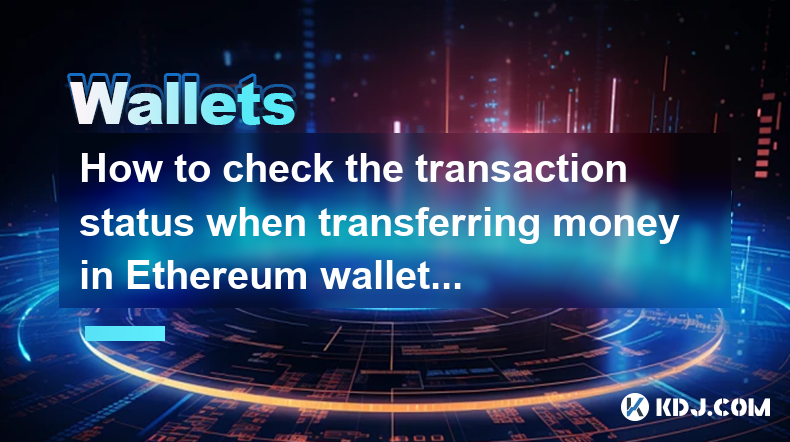
How to Check the Transaction Status When Transferring Money in an Ethereum Wallet?
Transferring Ether (ETH) or ERC-20 tokens on the Ethereum network involves several steps, and monitoring the transaction's progress is crucial. The speed and confirmation time vary significantly depending on network congestion and the gas fee you set. Understanding how to track your transaction is therefore essential to avoid unnecessary worry and ensure your funds arrive safely.
Understanding Ethereum Transactions
Unlike traditional banking systems, Ethereum transactions aren't instantly processed. They're included in blocks, which are added to the blockchain sequentially by miners. This process takes time, and the confirmation time depends heavily on the network's current activity. A higher gas fee generally leads to faster processing, as miners prioritize transactions with higher fees.
Methods to Check Transaction Status
There are several ways to track your Ethereum transaction status, each offering different levels of detail.
- Using Your Wallet's Interface: Most Ethereum wallets (like MetaMask, Trust Wallet, Ledger Live) provide built-in transaction trackers. After initiating a transfer, the wallet typically displays the transaction hash (a unique identifier). Clicking on this hash will show the transaction's status – pending, confirmed, or failed. The interface usually displays the transaction's progress in real-time.
- Using Block Explorers: Block explorers are websites that provide a detailed view of the Ethereum blockchain. Popular options include Etherscan, Blockscout, and others. You can enter your transaction hash into these explorers to see its current status, including the block it's been included in (if confirmed), the gas used, and the transaction fee. These explorers offer a comprehensive overview, often surpassing the detail provided by your wallet.
- Using Third-Party Transaction Trackers: Some third-party services specialize in tracking cryptocurrency transactions. These platforms aggregate data from multiple block explorers, offering a convenient way to monitor your transactions across different blockchains, not just Ethereum. However, always verify the legitimacy of any third-party service before using it.
Interpreting Transaction Status
Understanding the different transaction statuses is vital.
- Pending: This indicates your transaction is awaiting inclusion in a block. It's still unconfirmed, and the funds haven't yet reached the recipient. This phase's duration depends on network congestion and the gas price.
- Confirmed: Once your transaction is included in a block, it's considered confirmed. The number of confirmations required for security varies, but generally, six confirmations are considered sufficient. The more confirmations, the lower the probability of the transaction being reversed (though this is extremely rare on Ethereum).
- Failed: A failed transaction indicates that something went wrong. Reasons include insufficient funds, an incorrect recipient address, or a gas fee too low for the network's current conditions. The details of the failure are usually provided by your wallet or the block explorer.
Troubleshooting Transaction Issues
If your transaction remains pending for an extended period, several factors could be at play.
- Network Congestion: High network activity can significantly delay transaction confirmations. This is common during periods of high trading volume or when new projects launch on Ethereum.
- Insufficient Gas Fee: If your gas fee is too low, miners might not prioritize your transaction, leading to delays or failure. Increasing the gas fee often resolves this.
- Incorrect Recipient Address: Double-check the recipient address to ensure it's correct. Sending funds to the wrong address results in irreversible loss of funds.
- Wallet Issues: Problems with your wallet software can also interfere with transactions. Try restarting your wallet or updating it to the latest version.
Advanced Techniques
For more control over transaction speed, you can adjust the gas price manually. Higher gas prices increase the likelihood of faster confirmation, but they also increase transaction fees. Many wallets allow you to choose between "standard," "fast," and "fastest" gas options.
Specific Wallet Instructions
The exact steps for checking transaction status vary slightly depending on the wallet you use. Consult your wallet's documentation or support resources for detailed instructions specific to your chosen platform.
Common Questions and Answers
Q: My Ethereum transaction is pending for a long time. What should I do?
A: First, check the network congestion. If the network is congested, you might need to wait or increase your gas fee. If the network is not congested, check your wallet and the transaction details on a block explorer for any error messages.
Q: What does "gas" mean in an Ethereum transaction?
A: Gas is the computational cost required to execute a transaction on the Ethereum network. It's paid in ETH and determines the transaction fee.
Q: How many confirmations are needed for a secure Ethereum transaction?
A: While one confirmation is generally sufficient for many, six confirmations are typically considered secure. The higher the number of confirmations, the lower the risk of reversal.
Q: My Ethereum transaction failed. What are the possible reasons?
A: Possible reasons include insufficient funds, an incorrect recipient address, or an insufficient gas fee. Check your wallet and the transaction details on a block explorer for specific error messages.
Q: Can I cancel a pending Ethereum transaction?
A: Generally, you cannot cancel a pending Ethereum transaction. Once initiated, it enters the network. However, some wallets might offer a method to replace a transaction with a new one with a higher gas fee, effectively overriding the original.
Q: Where can I find my transaction hash?
A: Your transaction hash is usually displayed in your wallet after you initiate a transaction. It's a unique alphanumeric identifier that allows you to track the transaction on block explorers.
Clause de non-responsabilité:info@kdj.com
Les informations fournies ne constituent pas des conseils commerciaux. kdj.com n’assume aucune responsabilité pour les investissements effectués sur la base des informations fournies dans cet article. Les crypto-monnaies sont très volatiles et il est fortement recommandé d’investir avec prudence après une recherche approfondie!
Si vous pensez que le contenu utilisé sur ce site Web porte atteinte à vos droits d’auteur, veuillez nous contacter immédiatement (info@kdj.com) et nous le supprimerons dans les plus brefs délais.
-
 ICNT Échangez maintenant
ICNT Échangez maintenant$0.3182
30.31%
-
 M Échangez maintenant
M Échangez maintenant$0.2011
23.43%
-
 SOLO Échangez maintenant
SOLO Échangez maintenant$0.3788
17.55%
-
 HSK Échangez maintenant
HSK Échangez maintenant$0.7010
17.49%
-
 SHX Échangez maintenant
SHX Échangez maintenant$0.0116
15.42%
-
 COREUM Échangez maintenant
COREUM Échangez maintenant$0.1392
8.59%
- Bitcoin Solaris Market Launch: A New Dawn or Just Another Altcoin?
- 2025-07-08 20:30:12
- Bitcoin, Memecoin Mania, and the All-Time High Hunt: What's Next?
- 2025-07-08 20:30:12
- Byrq Coin: Scam or Savior? A Deep Dive Review
- 2025-07-08 20:50:12
- Shiba Inu's Burn Rate Bonanza: Can Crypto Burns Ignite a Price Rally?
- 2025-07-08 20:50:12
- XLM Price Prediction: Is Stellar Ready for a Breakout?
- 2025-07-08 19:10:13
- Memecoin Mania: V2EX, Pump.fun, and the Wild West of Crypto
- 2025-07-08 19:50:12
Connaissances connexes
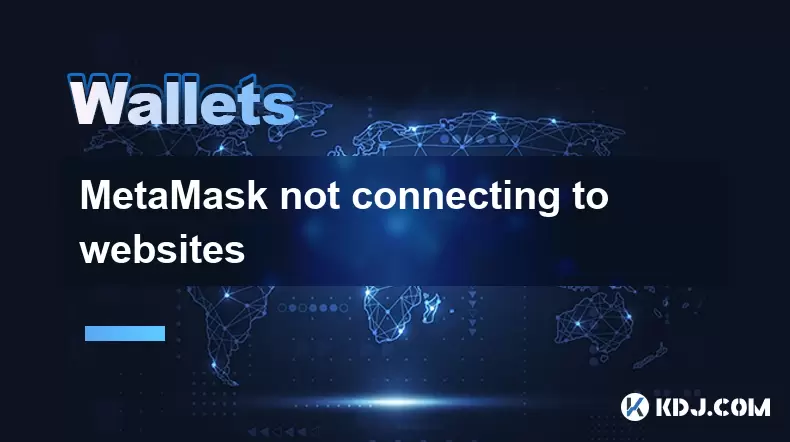
MetaMask not connecting to websites
Jul 08,2025 at 09:35pm
<h3>Common Reasons Why MetaMask Fails to Connect</h3><p>When MetaMask not connecting to websites, several potential causes can be id...
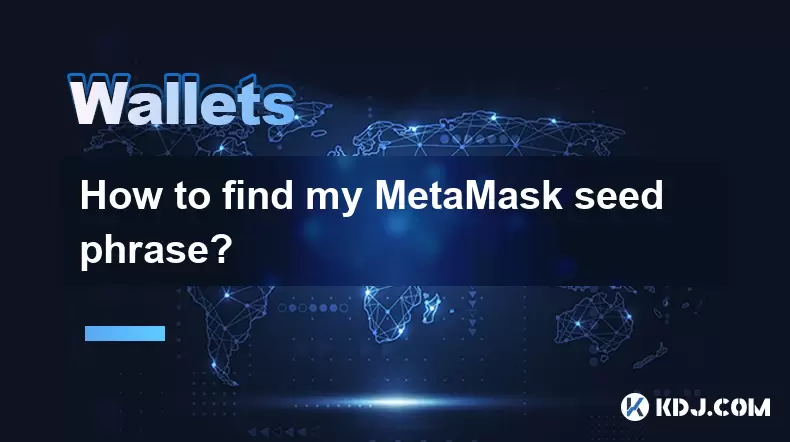
How to find my MetaMask seed phrase?
Jul 08,2025 at 09:21pm
<h3>Understanding the MetaMask Seed Phrase</h3><p>The MetaMask seed phrase, also known as a recovery phrase, is a sequence of 12 or ...
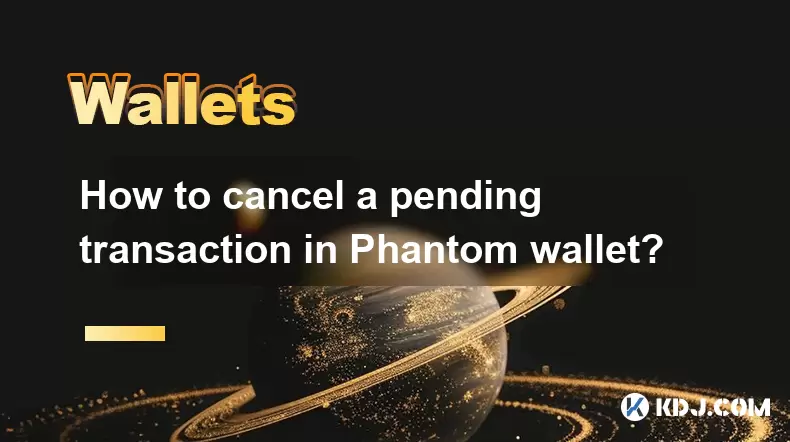
How to cancel a pending transaction in Phantom wallet?
Jul 03,2025 at 07:21pm
<h3>Understanding Pending Transactions in Phantom Wallet</h3><p>A pending transaction in the Phantom wallet occurs when a user initi...
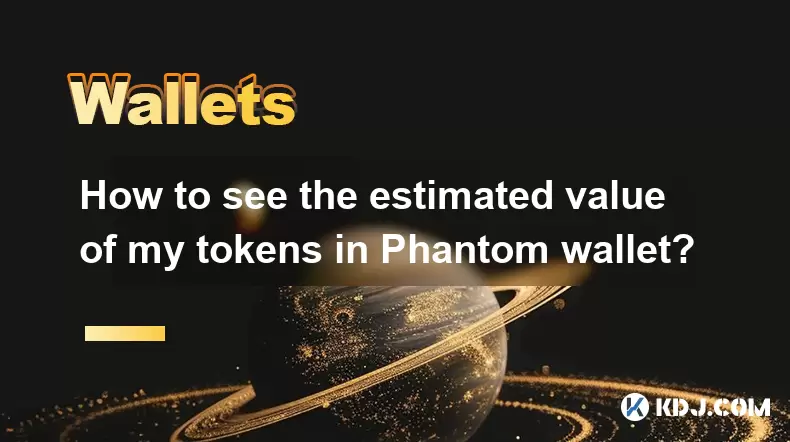
How to see the estimated value of my tokens in Phantom wallet?
Jul 04,2025 at 12:21am
<h3>What is Phantom Wallet?</h3><p>Phantom wallet is one of the most popular cryptocurrency wallets designed for the Solana blockcha...

How to lock my Phantom wallet extension?
Jul 03,2025 at 11:14am
<h3>What Is the Phantom Wallet and Why Lock It?</h3><p>The Phantom wallet is a popular non-custodial cryptocurrency wallet designed ...

Does Phantom wallet offer two-factor authentication (2FA)?
Jul 03,2025 at 09:00am
<h3>Understanding Phantom Wallet and Its Security Features</h3><p>Phantom wallet is a widely used non-custodial cryptocurrency walle...

MetaMask not connecting to websites
Jul 08,2025 at 09:35pm
<h3>Common Reasons Why MetaMask Fails to Connect</h3><p>When MetaMask not connecting to websites, several potential causes can be id...

How to find my MetaMask seed phrase?
Jul 08,2025 at 09:21pm
<h3>Understanding the MetaMask Seed Phrase</h3><p>The MetaMask seed phrase, also known as a recovery phrase, is a sequence of 12 or ...

How to cancel a pending transaction in Phantom wallet?
Jul 03,2025 at 07:21pm
<h3>Understanding Pending Transactions in Phantom Wallet</h3><p>A pending transaction in the Phantom wallet occurs when a user initi...

How to see the estimated value of my tokens in Phantom wallet?
Jul 04,2025 at 12:21am
<h3>What is Phantom Wallet?</h3><p>Phantom wallet is one of the most popular cryptocurrency wallets designed for the Solana blockcha...

How to lock my Phantom wallet extension?
Jul 03,2025 at 11:14am
<h3>What Is the Phantom Wallet and Why Lock It?</h3><p>The Phantom wallet is a popular non-custodial cryptocurrency wallet designed ...

Does Phantom wallet offer two-factor authentication (2FA)?
Jul 03,2025 at 09:00am
<h3>Understanding Phantom Wallet and Its Security Features</h3><p>Phantom wallet is a widely used non-custodial cryptocurrency walle...
Voir tous les articles

























































































